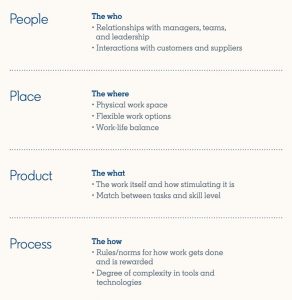The final discipline of growth banking is all about listening and acting on feedback from your customers. This discipline requires an understanding of measure and metrics. It requires a commitment to closed-loop feedback. And it starts with the decision to either build or buy a Voice of the Customer solution for your own organization.
But it’s important to note: having customer data and following up with individual customer and employee feedback is not enough to move your overall Net Promoter or Customer Loyalty scores.
Yes, you will be improving the experience for customers who share their insights and experiences with you.
But moving the overall scores will take a keen eye and a lot of analysis of customer insights. You’ll need to pinpoint the one thing to do next to improve your business. Whether it’s adapting a solution, adding a feature, or emphasizing a capability, it takes systemic changes to impact the experience of customer segments (or for all of your customers).

There is tremendous power hidden in your aggregated customer responses and trends. The goal of this article is to help you harness this power.
Step 1: Decide if you are in innovation or repair mode.
How do you know which mode you’re in? Try these checking your bank for the following symptoms.
You’re in innovation mode when…
- Your Net Promoter or Customer Loyalty scores are best-in-class (i.e., higher than those of USAA).
- Your customers are bringing their friends and family to you.
- The last complaint that went through the executive escalation process was more than 12 months ago.
- Your Recover or Problem alerts through your closed-loop feedback system are nonexistent.
You’re in repair mode when…
- You have more detractors than feels comfortable.
- Customers aren’t recognizing top talent in any volume.
- Your employee turnover is too high.
- Most of your customers have one, maybe two, products with you and would never describe you as their primary institution.
- The number of unresolved problems and complaints is too high.
Step 2: Find the area(s) you need to fix or emphasize.
If you find you’re in innovation mode, take a look at all of the customer suggestions and compliments that you have received through your closed-loop system. Even your best, most loyal customers will be telling you things they’d like to see done differently or better. Look at the scores you are getting and your customers’ life priorities. Then move to step three.
If you find you’re in repair mode, prioritize the complaints, problems, or lowest-scoring items that have the greatest impact on your Net Promoter Score (or top metric). A good Voice of the Customer partner will help you identify priorities through regression analysis or other statistical techniques. Your focus should be on the lowest-scoring, most-important aspects of the experience referenced by the majority of customers, or by a large proportion of your target, high-value customers.

Step 3: Get your best and brightest to brainstorm solutions or opportunities.
Run a brainstorming session to identify possible solutions to your biggest issues or to come up with innovative ideas to address the opportunity areas you uncovered in step two. In this instance, it helps to have a room of people across disciplines. You’ll be able to generate ideas from multiple perspectives. Make sure to set the tone for open and free brainstorming, and to avoid naysayers or people prone to shooting ideas down. Critical examination of any ideas happens in the next step.
Step 4: Prioritize your ideas and choose your one thing.
After you have a good set of solutions and opportunities, you’ll need to prioritize them. Your prioritization should be based on:
- Impact on the Customer – How much impact will this have on Net Promoter Scores, Customer Loyalty, household penetration, or other metrics? What impact will this idea have on our ability to attract and retain more of our target customer segments?
- Impact on the Bank – How will this affect the bank in terms of operational savings or efficiency? Will it reduce visits to the branch, or cause fewer customers to call in to check their balances? Will this effect a higher Net Promoter Score, or higher lifetime value of a set of customers?
- Ease of Implementation – How much investment of resources and staff is required? How long will the initiative take to be completed?
Step 5: Build your plan.
Landing on your one idea—your one change or improvement—is great progress. It creates a target for systematic change. However, the hard work is just beginning. You need to break the idea down into the key steps that must occur to bring that idea to life. You can develop strategies with questions like:
- Who is responsible?
- Who else needs to be involved?
- What are the key milestones or steps that need to be taken and in what order?
- What metrics will we establish to measure the success of this initiative?
- What is our goal or success measure that we are targeting?
This is also a good time to fill out an RACI (i.e., Responsible, Accountable, Consulted, Informed) grid, so you can ensure that all of the key stakeholders are appropriately involved in and aware of progress.
Step 6: Measure your success and adapt as necessary.
The final step to ensuring your ongoing feedback system leverages the right metrics is to ensure you can measure success of the changes you introduce. Will success mean:
- A drop in problem alerts?
- A decrease in the time needed for problem resolution?
- A point increase in the percentage of customers who are promoters?
- A reduction in employee turnover?
- An increase in customer base?
- A decrease in the number of calls to the contact center?
- An increase in online and mobile banking usage?
How you define success is a matter of your overall strategy. But if your metrics don’t move, or don’t move in the right direction, it’s time to revisit the plan for your one-thing improvement and adapt as necessary.
Business & Finance Articles on Business 2 Community
(39)
Report Post







